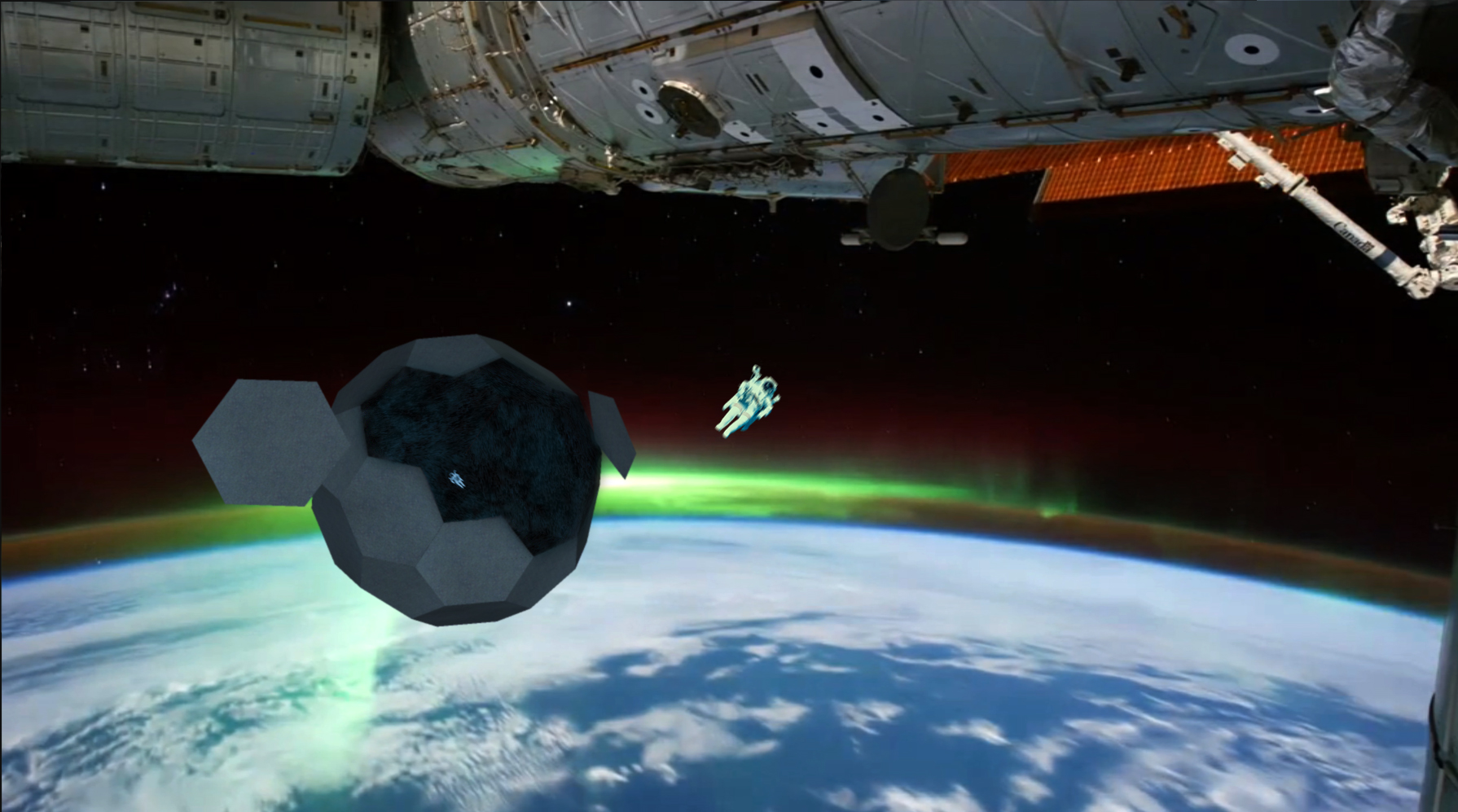
DOMINION .. SPACE .. SYSTEMS

Dominion Space Systems is working to settle the solar system with domes, spheres, cylinders and plates of enormous size, 60 meters or larger (half the length of a football field) which can be launched with existing rockets and self-assembled in low-Earth orbit. From there the structures would be moved by chemical propulsion to the Moon, Mars, Asteroid Belt, or anywhere in the Solar System and put to use for human habitation or in-space manufacturing.
Large domes can be assembled in orbit, landed, and then covered with soil with a simple, remote-controlled bulldozer. Domes can simulate the blue skies of Earth with blue interior lighting and protect astronauts from radiation.
The Lunar Ice Collection System uses self-assembling smart panels to construct a self-powered system of spacecraft that can collect ice from the Moon and convert it to hydrogen-oxygen rocket propellant for use in orbit or on the surface for human habitats. The system produces 3 times more fuel than it needs to operate continuously. Once it is started the system can produce water, fuel and energy without bringing it from Earth.
Timeline
In 2016 we entered the NASA iTech competition with our proposal for Self-Assembling Space Structures and we were selected as one of 25 semi-finalist
In 2017 we submitted an SBIR proposal to build a sub-scale prototype of 2 test panels for $125,000 to NASA. Here is a brief summary:
In 2018 we proposed a test of the Lunar Ice Collection System as part of the Payloads for Commercial Lunar Landers program.
Details: The Lunar Ice Collection Experiment
In 2018 we applied for a US Patent for the The Lunar Ice Collection System: US Patent application: Lunar Ice Collection System
In 2020 we started construction of a ground-test vehicle, a single panel with sensors, cold-gas reaction control system, and processor. The unit hangs from a gimbal, can rotate +/- 90 degrees on 3 axes, and can dock with a fixed target. A second test vehicle can rotate in one dimension and translate in 2 dimensions on a virtual air table. A virtual air table (patent pending) is a robotic vehicle on mechanum wheels that can rotate and translate itself on a level floor and is controlled by a system that simulates a zero-g object in free space. It senses thrust from the reaction control jets and integrates thrust to simulate the momentum of an object in orbit. Both test vehicles employ proximity sensors and rate gyros made for drone helicopters.
In 2021 we studied using camera sensors and neural networks to identify and determine the orientation of nearby panels just from their pattern of running lights.
In 2022 we started a CFD simulation study of the ice, water, and gas properties of the lunar surface and the air trapped under the lander’s dome. The study will demonstrate the sublimation of ice from the heat of the rocket engine, the collection of the ice on the underside of the dome, temporary storage of the ice during flight, and then the transfer of the ice and water into the collection tank with solar power and heat.